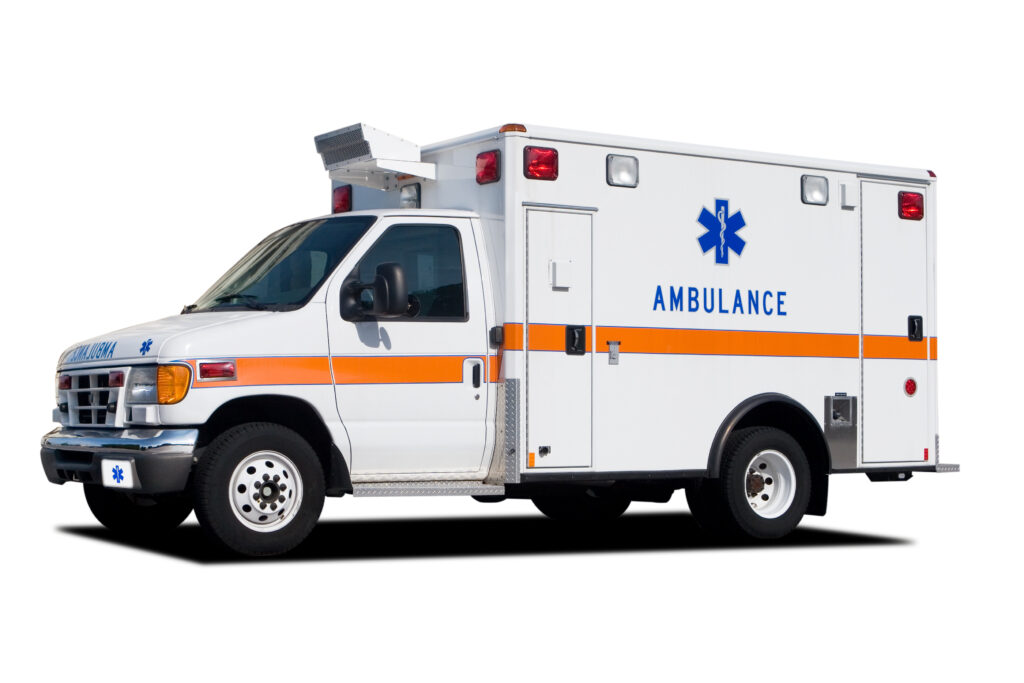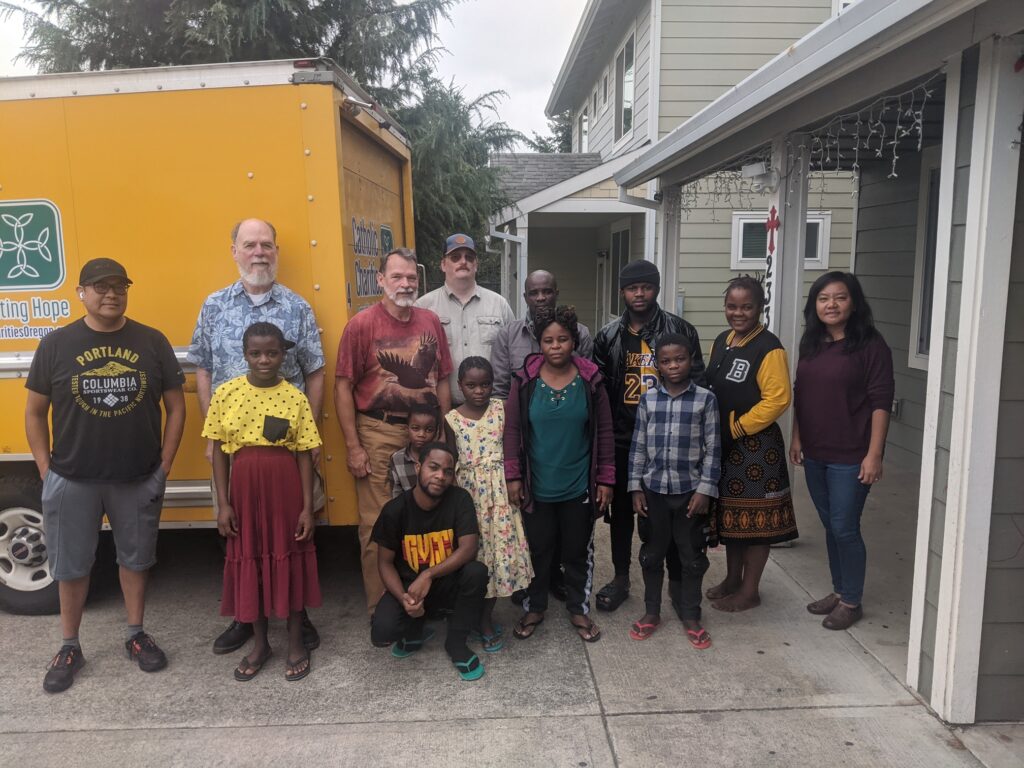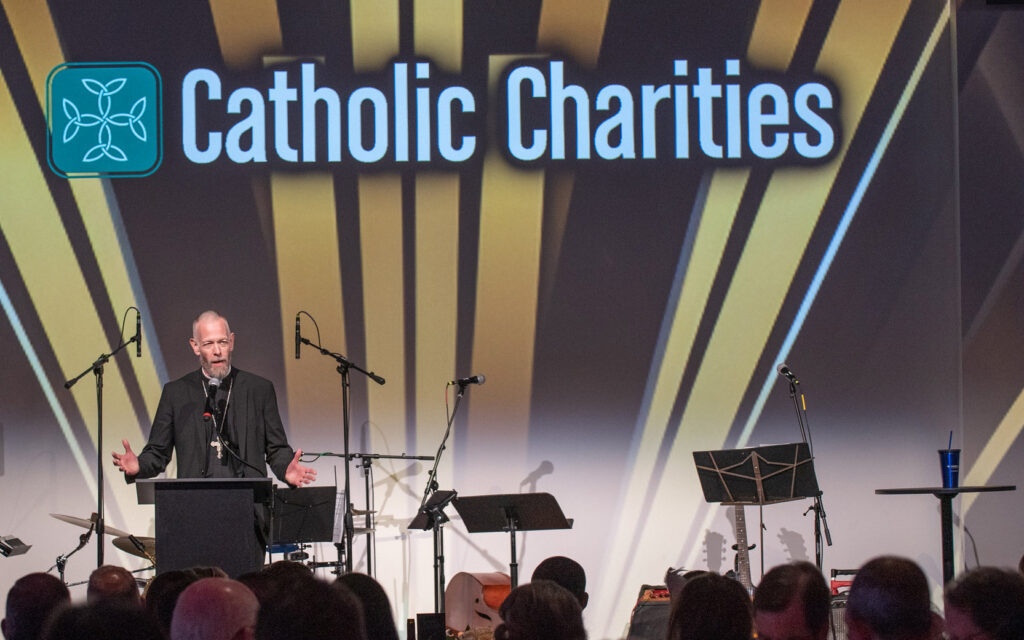Learn more about refugee resettlement in the United States and how Catholic Charities helps those who have been forced to flee their homes find safety, peace, and hope.
Frequently asked questions about refugees and the resettlement process
Who are refugees and displaced persons?
Refugees have endured great hardship—sometimes for many years—before they arrive in the United States. Often they have fled war and persecution and were forced to leave a full life behind, including family, friends, and most of their possessions. Meeting their basic needs and providing initial services lays the foundation for refugees to achieve self-sufficiency once again.
Refugees and displaced persons are men, women, and children fleeing war, persecution, and/or political upheaval—often uprooted with little warning and endure great hardship during their flight. They are considered “refugees” when they cross borders and seek safety in another country. They are considered “displaced” when they are forced to flee their homes, yet remain within the borders of their native country.
The 1951 United Nations Convention relating to the Status of Refugees, as amended by its 1967 protocol, defines a refugee as a person who, “owing to a well-founded fear of being persecuted for reasons of race, religion, nationality, membership of a particular social group, or political opinion, is outside the country of his nationality, and is unable to or, owing to such fear, is unwilling to avail himself of the protection of that country….”
The United States will not recognize persons who have participated in war crimes and violations of humanitarian and human rights law, including the crime of terrorism, as refugees. They are specifically excluded from the protection accorded to refugees.
What is the difference between a refugee, a migrant, and an immigrant?
Refugees are people who were forced to flee their homes, oftentimes without warning, and must seek safety in another country. Migrants may include refugees, but the term is often used more generally to describe people who make a conscious decision to leave their countries to seek a better life elsewhere. Immigrants are those who have moved to a foreign country with the intention of settling there.
How many refugees and displaced persons are there, and who makes up the majority of the refugee population?
There are over 68 million forcibly displaced people in the world, according to a June 2018 report by the UNHCR. The conflicts in Syria, Afghanistan, and Somalia have uprooted over half of these refugees. Children make up more than 50% of all refugees.
How many refugees have the opportunity to resettle?
Very few refugees are considered for resettlement. Less than 1% of all refugees resettle in a third country.
How does refugee resettlement work?
The U.S. Refugee Program is a public/private partnership. After the U.S. State Department arranges for safe travel of refugees (via a loan made to refugees), they are assisted by local resettlement agencies and refugee service providers. The State Department provides limited funds to these agencies to set up housing, look for jobs, rally private community support, and otherwise help refugees adjust to their new country. Refugees are eligible for up to twelve months after arrival in the country of case management services, and eligibility criteria parallel the state’s Medicaid and public assistance programs.
How does the U.S. determine if a refugee is eligible for resettlement?
Applicants for refugee admission to the U.S. must satisfy the following criteria:
- Meet the definition of a “refugee” as determined by U.S. government officials
- Be among those refugees determined by the US President to be of special humanitarian concern to the US
- Be otherwise admissible under U.S. law
- Not be firmly resettled in any foreign country
Although a refugee may meet the above criteria, the existence of the U.S. Refugee Admissions Program does not create any entitlement for that person to be admitted to the U.S.
How many refugees does the US accept for resettlement?
The United States accepts a limited number of refugees each year. The U.S. President, in consultation with Congress, determines the authorized goal for refugee admissions through a Presidential Determination. In federal fiscal year 2019, the United States has authorized 30,000 refugees for admission.
What are the options for resettlement?
There are three internationally-accepted durable solutions for refugees:
- Voluntary repatriation: Refugees return to their former country of nationality when conditions prevail that allow return in safety and with dignity.
- Local integration: Local settlement and integration of refugees in their country of first asylum upon receiving agreement from the host country.
- Resettlement: Most frequently used for refugees whose life, liberty, safety, health, or human rights are at risk in the country where they have sought refuge. Resettlement to a third country becomes the primary objective or priority when there is no other way to guarantee the legal or physical security of the refugee.
The United States has a tradition of offering refuge to those fleeing persecution and war. The U.S. government maintains a long-established humanitarian program that grants sanctuary in this country to a limited number of refugees who cannot safely return home or stay in a host country.
How are refugees vetted and how long does it take?
Refugees go through an extensive, multi-step screening process that often takes up to two years to complete. Many refugees wait more than 10-20 years to be resettled.
What are the requirements for Catholic Charities of Oregon to be able to serve a client?
Reception & Placement Services (R&P)
- Client must have refugee, or SIV status granted, with documentation present
- Client must not have received resettlement services from another resettlement agency
- Client must have entered the US within the last 30 days
- Services are rendered from date of US arrival up to 90 days
Refugee Family Services and Connections (RFSC)
- If refugee or SIV, client must have documentation present confirming their status and must have been in the US for fewer than 12 months
- If foreign-born victim of trafficking, client must have received their stamped certification from HHS (Health and Human Services) fewer than 12 months ago
- If asylee, client must have received asylum status from USCIS or an immigration judge fewer than 12 months ago
- Services are rendered up to 12 months from US arrival date
Match Grant Employment Services (MG)
- Client must have one of the following immigration statuses: refugee, asylee, SIV, T Visa, Cuban/Haitian Entrant, or certain Amerasians from Vietnam
- Refugees & SIV holders must be enrolled within 31 days of eligibility (date of US arrival)
- Asylees, T Visas, or others must be enrolled within 90 days of their status being granted
- Employment services are for a maximum of 180 days
Preferred Communities (PC)
- Client must be a female refugee-equivalent who has been in the country fewer than 5 years and is identified as vulnerable or at-risk in regards to their stability and/or adjustment to the US
- Services can be rendered up to 1 year from enrollment
Trafficking Victim Services (TVAP)
- Client must be foreign born, living in the US, and identify as a victim of trafficking seeking their T Visa
- If they have received their stamped certification from HHS, the date must be less than 1 year ago
- Services can be rendered up to 1 year
Tell me more about the refugees you serve.
Catholic Charities provides a variety of services and resources to individuals and families with qualifying statuses through federal- and state-funded programs. Our refugee clients come to us through a partnership with the Department of State and the United States Conference of Catholic Bishops (USCCB). USCCB is the voluntary agency at the national level that facilitates resettlement efforts and assigns cases to our program. Through our programming we are able to serve refugees, asylees, and Trafficking Victim Visa (T-Visa) and Special Immigration Visa (SIV) holders.
Before arriving in the United States, most refugees had a full life with work, family, and fun until circumstances forced them to leave their home. Otherwise, there is no typical refugee.
Some refugees come from rural areas, and some come from large cities. Some come from cultures relatively similar to ours and others may not trust or accept tools or services we take for granted. For example, a refugee may not be comfortable going to the doctor, as medicine practiced here may be drastically different from their home country. A refugee may be hesitant about using something as seemingly basic to us as a microwave or an ATM.
Many refugees had successful professional careers in medicine, law, business, or education in their home country. These individuals have not suddenly lost their intelligence, skills, or experiences because they lost their homes. But they do face cultural and language barriers as they work to rebuild their life in a new country.
How do refugees make it to the United States?
The Department of State’s Bureau for Population, Refugees, and Migration (PRM) oversees the US Refugee Admissions Program through US embassies worldwide. The State Department develops application criteria and refugee admission levels and presents eligible cases for adjudication by officers of the United States Citizenship and Immigration Services (USCIS).
USCIS officers travel to the country of asylum to interview refugees who fall within the priorities established for the relevant nationality or region. The USCIS officers interview potential applicants to determine whether they are refugees as defined under US law. A refugee of any nationality may be referred by UNHCR; however, this does not guarantee admission to the US for they must still qualify under US law.
Upon completion of security and medical screening, the USCIS officer may approve the refugee’s application for US resettlement. After approval, arrangements are made for their placement with a US voluntary agency and travel to the US.
Do refugees contribute to their resettlement in the U.S.?
Yes, refugees pay taxes and re-pay their travel loan. The primary goal of the resettlement process is to help refugees work toward self-sufficiency as contributing members of society and, eventually, attain their citizenship.
What happens to refugees when they come to the United States?
Refugees must rebuild their lives from traumatic and tragic circumstances. The majority embrace their newly adopted homeland with tremendous energy and success. They go on to work, attend universities, build professions, purchase homes, raise children, and contribute to their communities. Ultimately, refugees obtain citizenship and become fully participating members of society.
Many refugees come to the United States with few possessions and no contacts in the US Other refugees come here and reunite with family members. All refugees receive limited assistance from the US government and voluntary agencies. These agencies help refugees find housing, learn about life and customs in America, secure jobs, learn English, and become citizens. Working closely with the community at large, agencies provide most of the basics needed to rebuild their lives and help overcome cultural barriers so that adjustment is as easy as possible.
The circumstances under which refugees leave their country are different from those of other immigrants. Often in fleeing persecution, they are without the luxury of bringing personal possessions or preparing themselves for life in a new culture. Recognizing this fact, the federal government provides one-time resettlement assistance to newly arrived refugees. In the first 90 days, agencies contract with the Department of State to provide for refugee’s food, housing, employment, medical care, counseling, and other services to help the refugee make a rapid transition to economic self-sufficiency.
The Refugee Resettlement Program provides a wide array of services to refugees assigned by the US Conference of Catholic Bishops (USCCB) in collaboration with the Department of State. These services include assistance with housing, social services, health care referrals, school enrollment, community and cultural orientation, English language assistance and education, interpretation, employment, and transportation to initial appointments. We provide initial services for 90 days and additional case management support for up to twelve months.
What is the impact of refugee resettlement?
With the assistance of Catholic Charities of Oregon and community partners, refugees work towards becoming contributing members of their communities and the local economy. The majority of adults who are able to work are successful in finding employment within three to five months. Most gain financial independence within a few years and many become (or become again based on their previous occupation) business owners, carpenters, doctors, engineers, interpreters, landscapers, nurses, pharmacists, pastors, social workers, students in higher education, tailors, and teachers. Refugees have higher rates of entrepreneurship than the US-born population, and on average, within 25 years of arrival, the median household income for a refugee family is $14,000 more than the median income of US households overall.
How long does Catholic Charities of Oregon assist each refugee client?
We assist each refugee family with intensive case management services for 90 days, in addition to support until they are employed, for up to 12 months.
Where do refugees in Portland and Salem come from?
Catholic Charities of Oregon serves a cross-section of refugees being resettled across the world. Currently we are seeing refugees from Somalia, Myanmar (Burma), Sudan, South Sudan, Iraq, Afghanistan, Iran, Eritrea, Central African Republic, and Democratic Republic of Congo.
Want to know more?
Check out the United Nations High Commissioner for Refugees (UNHCR) for more information regarding resettlement.
Sign up for a volunteer training to learn more and get involved.
Contact us for more information.




